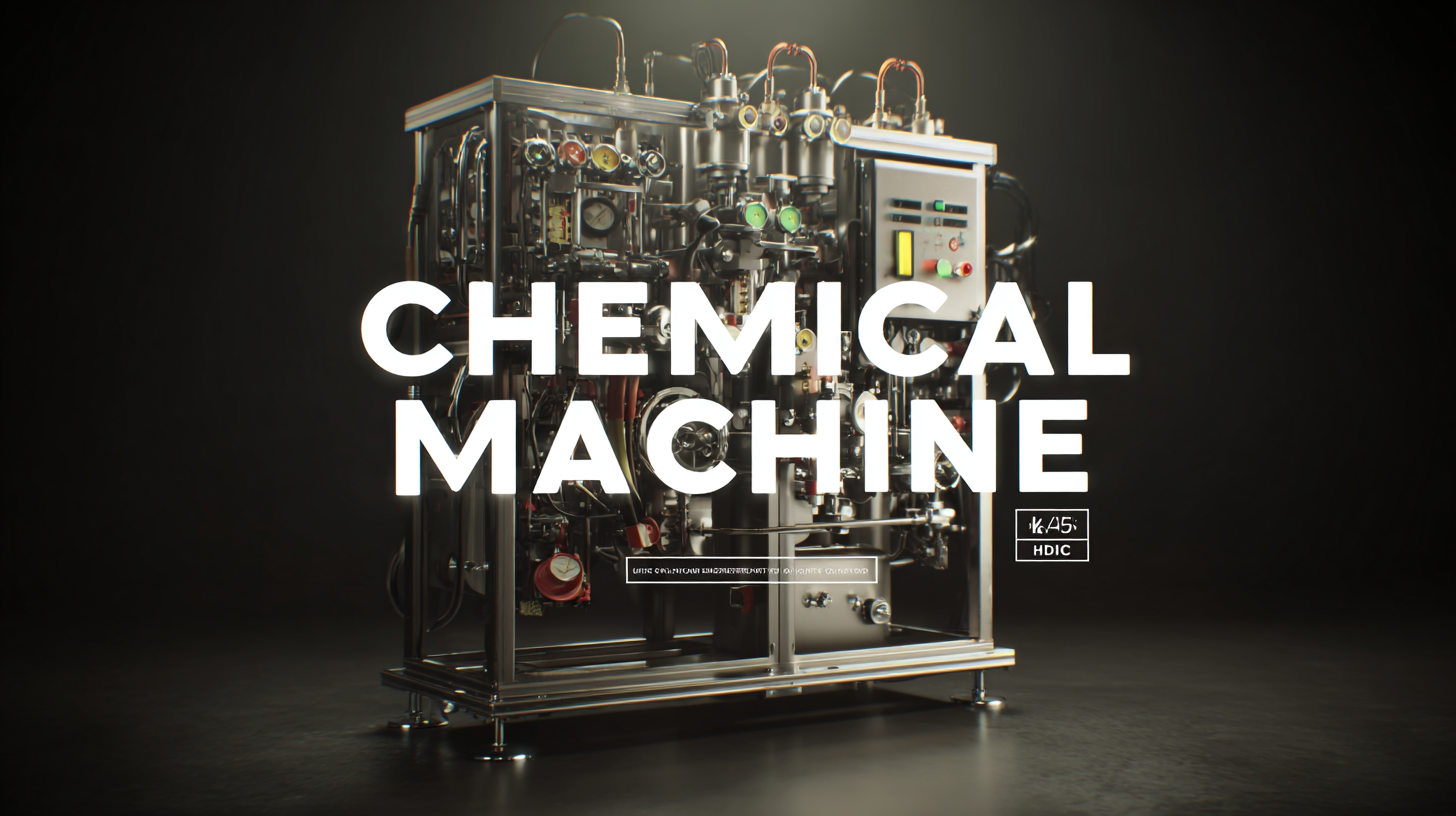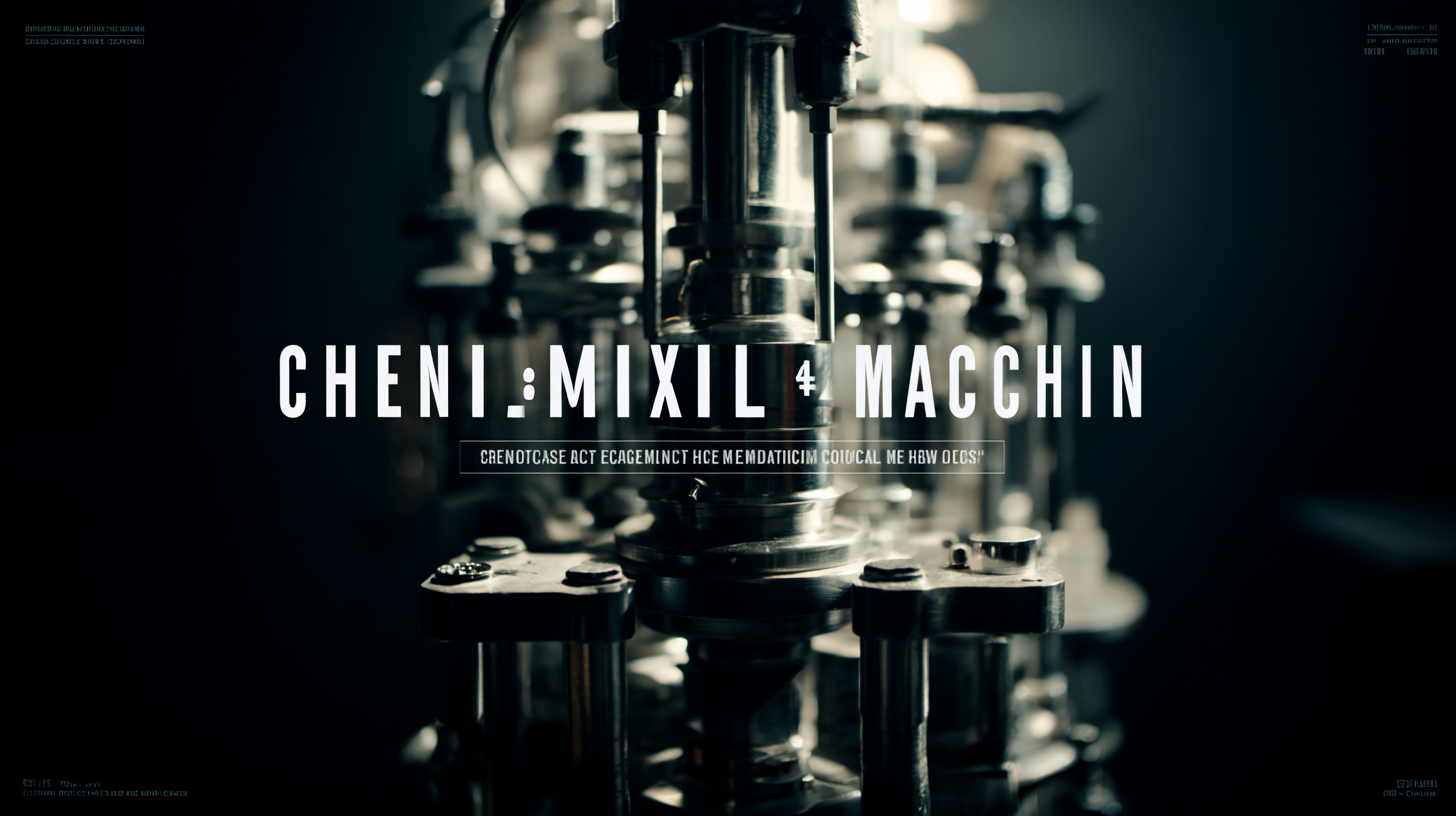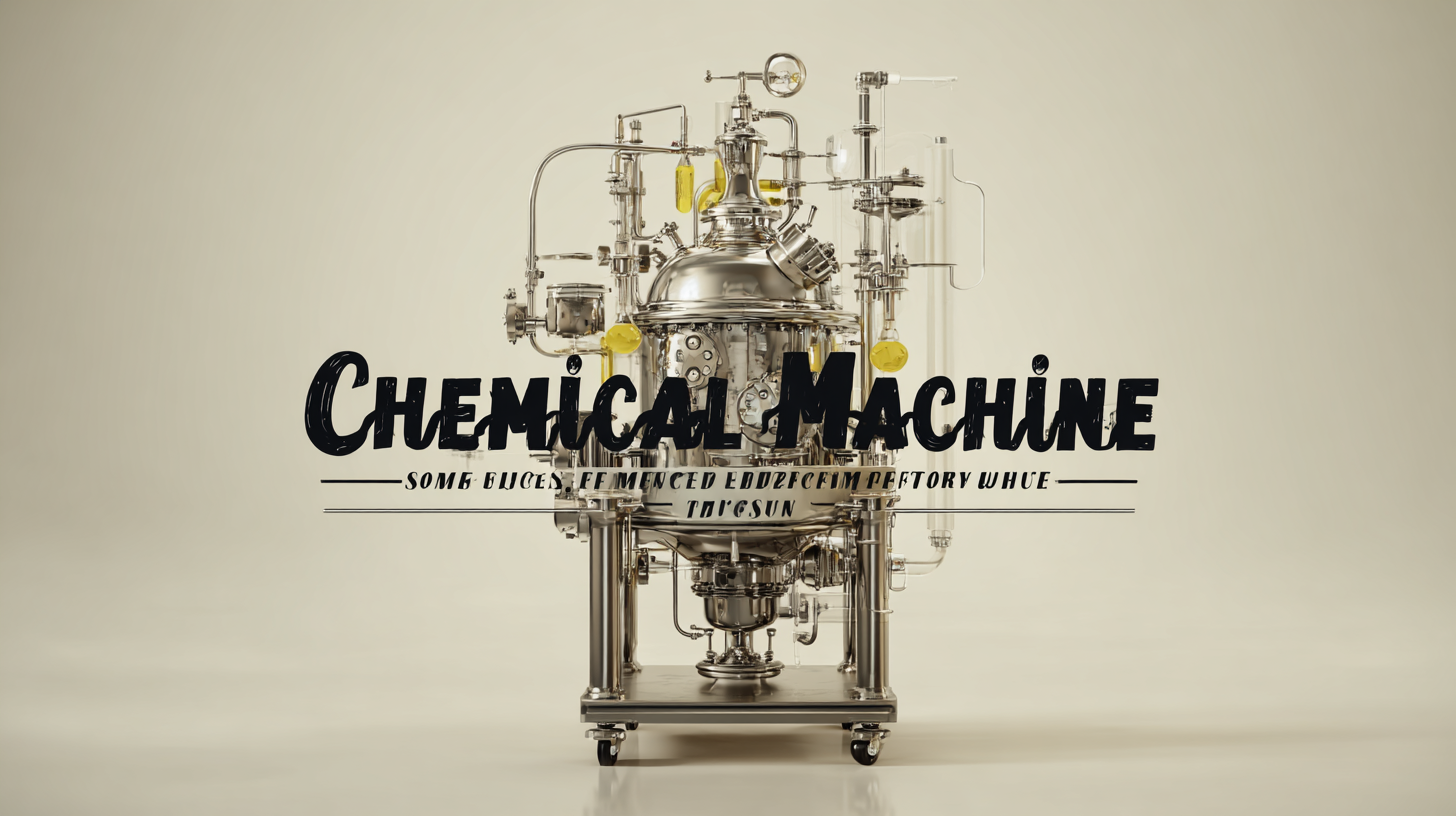
In today's fast-paced industrial landscape, the demand for high-efficiency production processes has never been greater, particularly in the chemical manufacturing sector. According to a recent report by Mordor Intelligence, the global chemical processing industry is poised to reach a market size of $4 trillion by 2025, driven by continuous advancements in technology and increasing competitive pressures. At the heart of these advancements lies the Chemical Mixture Machine, a pivotal tool that optimizes mixing processes, enhances product quality, and reduces operational costs. As manufacturers seek to streamline their operations and improve output, investing in the best chemical mixture machines becomes essential for achieving superior efficiency and meeting stringent industry standards. This blog will explore innovative solutions for enhancing productivity through the latest advancements in chemical mixing technology, enabling businesses to stay ahead of the curve in an evolving market.

When searching for a high-performance chemical mixture machine, several key features are essential to consider to enhance efficiency in production. According to a recent industry report by MarketsandMarkets, the global chemical mixing market is expected to reach USD 7.5 billion by 2026, highlighting the growing demand for advanced machinery. An effective chemical mixture machine should incorporate robust mixing technology, such as high-shear or paddle mixers, which can significantly reduce mixing time and improve uniformity in batch processes.
Another crucial aspect to evaluate is the machine's automation capabilities. As per a study by Research and Markets, the automation of chemical mixing processes can lead to a reduction in production costs by up to 30%. Look for machines equipped with advanced control systems that allow for precise monitoring and adjustments of mixing variables. Additionally, energy efficiency is a rising concern; machines designed with energy-saving technologies not only reduce operational costs but also contribute to sustainable manufacturing practices, an important consideration in the modern chemical industry.
| Feature | Description | Importance | Efficiency Improvement (%) |
|---|---|---|---|
| Automated Mixing | Reduces manual error and ensures consistency in mixing | High | 25% |
| Variable Speed Control | Allows adjustment of the mixing speed for different viscosity levels | Medium | 15% |
| Temperature Control | Maintains optimal temperature for chemical reactions | High | 30% |
| Smart Sensors | Real-time monitoring of mixture properties | High | 20% |
| User-Friendly Interface | Easy to operate and train staff | Medium | 10% |
When it comes to the production of various chemicals, the type of mixture machine employed can significantly impact efficiency and product quality. There are several types of chemical mixture machines, each designed for specific applications within the industry.
For instance, ribbon blenders are ideal for dry powder mixing, providing a homogeneous mixture in a shorter time frame. Their design allows for uniform distribution of materials, making them a popular choice in pharmaceuticals and food processing.

Another type is the paddle mixer, which is effective for higher viscosity materials. Its robust construction and efficient agitation ensure that even challenging substances are thoroughly mixed. Paddle mixers are commonly used in the chemical and plastics industries, where blending thick pastes or granules is essential.
Additionally, there are high-shear mixers, which utilize high-speed rotation to break down particles and create emulsions. These machines are particularly beneficial in cosmetic and food industries, where consistent texture and quality are paramount. Each of these machines serves a unique purpose, showcasing the importance of selecting the right equipment for optimal efficiency in chemical production.
When operating chemical mixture machines, efficiency is paramount. Implementing best practices can significantly enhance performance and reduce operational costs. According to a report by MarketsandMarkets, the global chemical manufacturing sector is expected to reach $7.6 trillion by 2025, highlighting the increasing necessity for optimized processes. One effective way to achieve this is through regular maintenance and timely calibration of mixing equipment. This ensures accurate measurements and consistent product quality, which is critical when scaling production.
Another vital practice involves training operators thoroughly on machine handling and safety protocols. A study from the American Chemical Society indicates that approximately 80% of equipment failure can be traced back to human error. By investing in operator training programs, companies can increase operational efficiency and decrease the likelihood of costly downtime. Furthermore, leveraging advanced technologies such as IoT sensors and predictive analytics can provide real-time performance data. This data allows for proactive adjustments to the mixing process, leading to minimized waste and enhanced product consistency. As industries evolve, adhering to these best practices will position companies to thrive in an increasingly competitive market.
Chemical mixing is a critical process in various industries, yet it often presents numerous challenges that can hinder productivity and consistency. One of the most common issues faced is the uneven distribution of components, leading to suboptimal reaction rates and inconsistent product quality. This typically arises from improper mixing techniques or equipment inadequacies. To overcome this, it is essential to invest in advanced mixing technology that ensures uniform distribution, such as high-shear mixers or multi-stage mixing systems, which can enhance the homogeneity of the final product.
Another prevalent challenge is the control of temperature and viscosity during the mixing process. Fluctuations in these parameters can significantly affect the chemical reactions and the overall outcome of the mixture. Implementing temperature regulation systems and real-time viscosity monitoring can help mitigate these issues. Additionally, training operators on the intricacies of mixing procedures and the properties of raw materials can empower them to make informed adjustments, thus improving efficiency and reducing waste in production. By addressing these common challenges with innovative solutions, industries can enhance their mixing processes and achieve higher efficiency in their operations.
The landscape of chemical mixing solutions is rapidly evolving, driven by innovative technologies that enhance efficiency and productivity. According to a recent report by MarketsandMarkets, the global chemical mixer market is expected to reach USD 5.9 billion by 2025, growing at a CAGR of 4.5%. This growth is largely attributed to advancements in automation and the integration of smart technology, which allow for precise control and monitoring of mixing processes. As companies strive for increased throughput, these technological innovations are key in reducing operational downtime and improving product consistency.
Moreover, the adoption of advanced mixing equipment like high-shear mixers and batch mixers has been on the rise. These machines not only optimize the blending process but also enable manufacturers to handle complex formulations more effectively. A report from Grand View Research indicates that the demand for high-shear mixers is anticipated to expand significantly, fueled by the growing need for uniformity in chemical production. As industries shift towards more sustainable practices, the implementation of energy-efficient mixing technologies will play a critical role in shaping the future of chemical manufacturing, ensuring that businesses can meet rising environmental standards while maintaining high performance.

